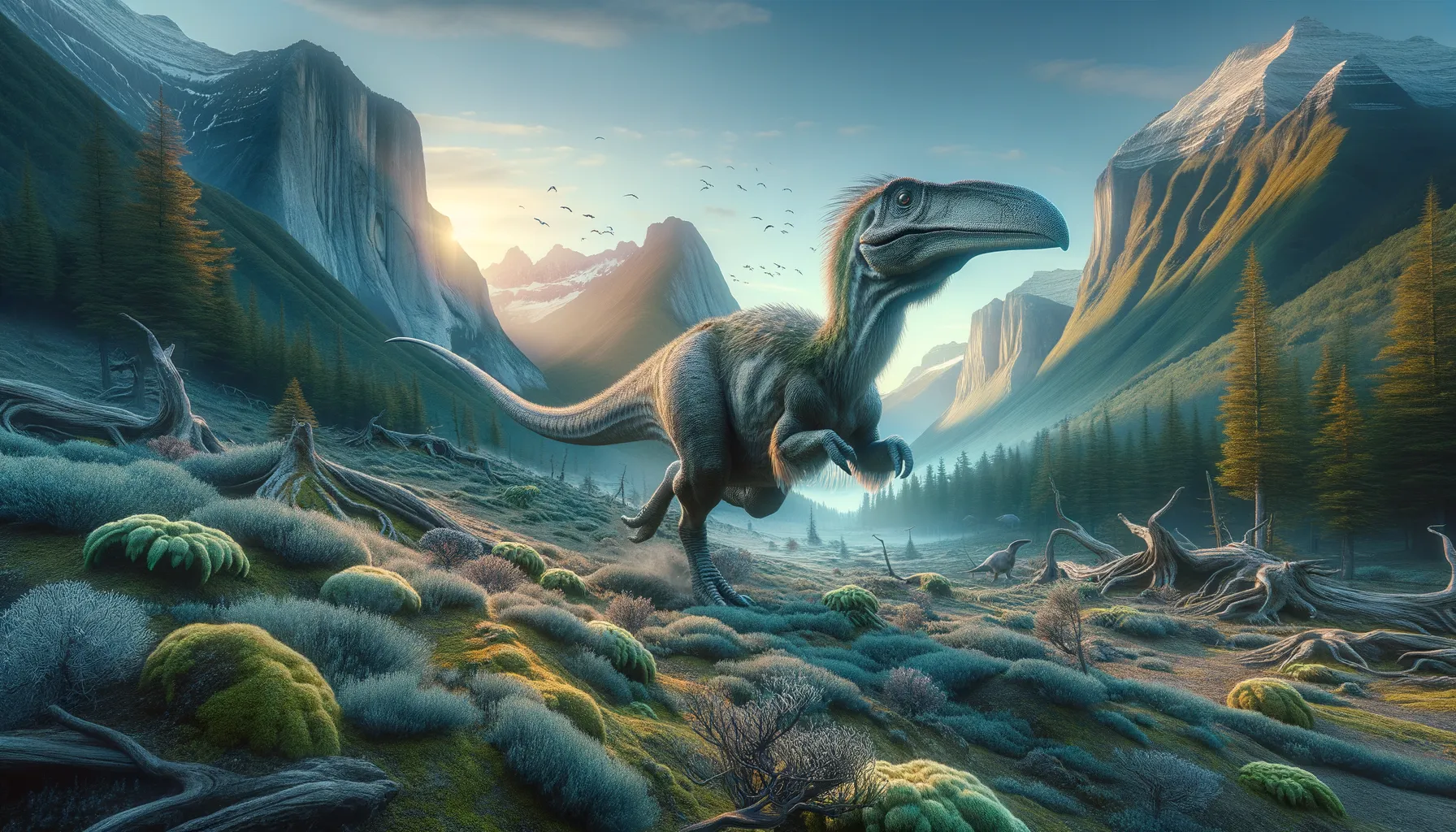
Griphornis
The swift survivor with a beak to match.
Period
Jurassic
Length
Measured approximately 6 meters in length.
Height
Stood at about 3 meters tall.
Weight
Weighed around 1,200 kilograms.
Griphornis was a medium-sized dinosaur living during the Jurassic period. Known for its distinctive beak-like snout, it adapted well to both forested and open environments. With a moderately fast speed, it could easily navigate various terrains. Griphornis played a significant role in the ecosystem, interacting with both predators and prey, and showcasing unique social behaviors.
Diet
Griphornis was primarily herbivorous, feeding on a variety of plant life including ferns and cycads. Its beak allowed it to efficiently clip vegetation, making it well-adapted to its environment.
Hunting
Though primarily a herbivore, Griphornis may have opportunistically eaten small animals or insects. Its speed helped it avoid predators rather than engage in hunting.
Environmental challenges
Griphornis faced challenges such as fluctuating climates and the need to find sufficient food sources. Predation pressure from larger theropods also posed a threat. Seasonal changes would have forced it to migrate in search of more hospitable areas.
Speed
Griphornis was a relatively fast mover, suited for outrunning predators.
Lifespan
It had a moderate lifespan of around 20 years.
First discovery
First discovered in 1995 in the South Dakota badlands.
Fun Facts
- Griphornis was a medium-sized theropod dinosaur believed to have lived during the late Jurassic period.
- This dinosaur got its name, which means 'griffin bird', due to its bird-like features and mythical appearance.
- Griphornis had a distinctive beak-like snout, much like modern birds, allowing it to scavenge for food effectively.
- It is thought that Griphornis had feathery proto-wings, though it couldn't fly, these may have helped with balance or display purposes.
- The fossils of Griphornis have been primarily found in what is now Portugal, suggesting they might have lived in coastal environments.
- Griphornis is believed to have been an omnivore, nibbling on plants and small animals alike in its surroundings.
- The discovery of Griphornis fossils has provided valuable insights into the early evolution of bird-like features in theropod dinosaurs.
Growth and Development
Griphornis hatched from eggs and grew rapidly in its juvenile years to reach a size where it could fend off smaller predators. It continued to grow steadily through adulthood, with bone structure indicating a long maturation period.
Habitat
Griphornis preferred semi-arid regions with access to abundant vegetation. It inhabited both densely forested areas and more open plains. Water sources were crucial, so it stayed near rivers or lakes when possible.
Interaction with other species
Griphornis coexisted with various other dinosaur species, engaging in mutualistic relationships with some, while competing for resources with others. Its presence in mixed-herd environments suggests a degree of social interaction and cooperation.
Natural lifespan
Griphornis naturally lived up to around 20 years.
Reproduction
Griphornis laid eggs in nests constructed from plant material. Parental care is suspected from evidence of associated adult bones near nesting sites. They likely engaged in communal nesting practices.
Social behaviour
Griphornis exhibited strong social behavior, often traveling in groups for protection and social interaction. Vocalizations may have been used to communicate within the group. Seasonal movements indicate a degree of social organization.
Fossil locations
Fossils of Griphornis have been predominantly found in North America, with major sites located in South Dakota and Wyoming. These locations provide critical insight into its environment and lifestyle.
